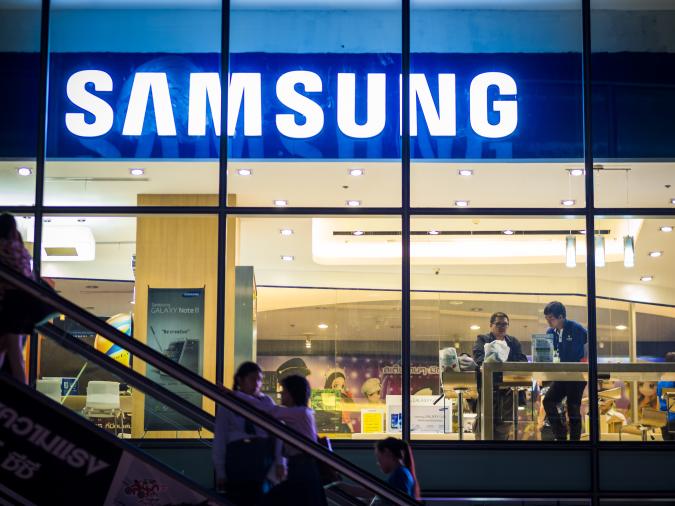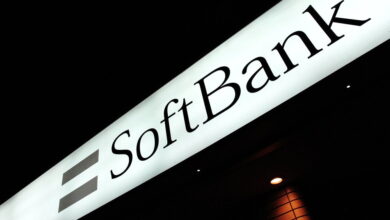
In May, all eyes will be on the United Kingdom, which is preparing to host the 67th edition of the Eurovision Song Contest in Liverpool. With thousands of people flocking to the city and a global audience that last year reached 161 million, it’s not just artists who will be feeling the pressure.
The event will have to exceed all expectations, connect with the public and offer a consistent viewing experience, regardless of how and where they see it. This means that the focus will be on the technical preparations for Eurovision and how the vast demand for consumer experiences will be managed, which means data, lots of data. This will be essential for a universal viewing experience that does not detract from the magic of the event.
As viewers, we want to feel connected and engaged with big events; Even if we’re not there in person, we want to feel like we’re part of the show. And that puts a LOT of pressure on the organizers, who have to prepare for any and all eventualities and continual demands.
Imagine, for example, that viewers stream the entire show through their mobile devices. Based on average consumption, this could easily equate to over 1.9 million TB of data, or data consumption in a ballpark of about 23,000 Super Bowls.
Balancing this demand for data and delivering an exceptional connection experience ultimately requires the deployment of multiple clouds, all working together, with applications and workloads stored, moved, and managed, across all of them, up to get to the device. How does this approach bring the show to life?
Ensuring an enriching multimedia experience
No fan wants to have the feeling that they have missed the television moment that is trending on Twitter or the live repetition of a behind-the-scenes interview that casts doubt on voting intentions.
By combining different cloud environments, private, public and edge clouds, these fears can be allayed. With a local public network, producers can enable attendees to access and download mobile apps, share content in real time, and replay highlights. And thanks to edge environments, where data is processed closer to the device, viewers can be on the other side of the world, reacting and celebrating alongside those in the stadium, and still hear comments or read messages.
But this immersive experience falls apart if the quality of the broadcast is not homogeneous. Audiences from Australia to Armenia need a fast, content-rich experience with little buffering, pixelation or downtime. And this is where a multi-cloud environment serves a range of devices with different bandwidths through the knowledge of software-defined networks.
Whether it’s streaming over 3G to an old mobile device or ultra HD to a new TV, this relies on the ability for producers to easily move and manage workloads, applications and media streams across different clouds. This includes federation with intelligent clouds on public or telecommunications networks, all based on the use cases needed to deliver compute capacity increases and consistent viewing experiences autonomously in real time.
State-of-the-art content with drones and streaming
The experience of big events goes far beyond what happens on stage. Fans expect roaming drone footage, one-shots, replays and real-time broadcasts.
For the spectacle to be captured on such a scale, and with such understanding, requires robust and reliable connectivity, instant access to data storage and retrieval, as well as extensive AI to best analyze a multitude of inputs. Even the slightest glitch or downtime could affect the experience.
That is why producers rely on the support of a multi-cloud environment. With the speed, low latency, and reliability of cutting-edge environments, remote-controlled drones can produce cutting-edge content, capturing exciting shots and videos in real time. Then, in unison with telecom and public networks, they can securely store the footage while simultaneously uploading it to mobile apps, and even instantly stream it to remote devices, such as on-venue terminals, for content editing. live, thus solving a major challenge that producers have faced for decades.
But that is not all. With different cloud environments working together with seamless application movement and management, remote fans can be guaranteed consistent connections regardless of device or operating system.
Consider, for example, a Bluetooth headset and a fan watching the broadcast remotely on a train using their network data. In this case, an edge cloud could drive a seamless, low-latency connection, working with the public cloud to support hosting and network scalability.
Perfect logistics and planning that enhance the event experience
At any large event, it’s not uncommon for there to be hundreds of workers, from sound and lighting engineers to health and safety crews, electricians, caterers, stage technicians, cleaners, and media and entertainment staff.
Every worker needs to be in the right place, at the right time, to communicate and collaborate, and have visibility into the phases of different projects, whether it’s building the set, lighting and sound effects, or creating installations. on site.
And this creates a significant challenge for event production and management, as each party is likely to use their own digital infrastructure. Although private clouds can be used to keep sensitive information safe, each worker may also need to connect to public networks to scale applications and collaborate on documents, such as spreadsheets and security.
A multi-cloud approach enables seamless logistics and planning and offers a “single pane of glass” network view to drive data usage where it is needed and seamlessly federate it through software-defined networks that focus on content and Not just in the connections. In turn, this allows you to federate workloads and ultimately information across all event teams.
Creative vision in each performance
Fans love Eurovision for the spectacle of the performances. Every year, creativity reaches new levels, fueled by the potential of technology. More importantly, performers don’t have to understand this technology, but rather how it can be used to refine their vision of performance.
By bringing together edge and public clouds, performances can be choreographed to ensure that every camera will be in the right place at the right time, and specific drone routines and camera shots will be available for any movement.
This year, everyone remembers the slow motions of the Oscars and how they influenced memes and brought new ways to interact with the show. In a similar vein, the magic of Eurovision is captured in these creative moments that offer unique perspectives or images of the stars.
In a multi-cloud environment, the edge cloud can capture these moments as they happen, which are then rapidly scaled and stored with public networks. Then, only in conjunction with telecommunication networks and infrastructures, they can be transmitted in real time directly to users’ devices, including data overlays and in-depth information, much like, for example, services do today. streaming services like Amazon that are intertwined with IMDB, to offer a richer set of information and curiosities about the environment.
Consistent safety rules, at home or in the stadium
The safety of fans, staff and performers is paramount. This includes, of course, physical security, but also the protection of the integrity of online content. Fans want to be sure that the content they access is legitimate, that voting is secure, and that their personal data is protected. Similarly, organizers must be sure that each drone has a robust network that cannot be tampered with.
Central to this is smarter security, where the context of consumption and integration is visible, and AI can be engaged at scale to ensure that networks and data behave as expected. With different clouds working together, manufacturers must take advantage of the inherently comprehensive and software approach to security, ensuring scalability and flexibility to understand each device and data use case. With private clouds, for example, organizers can maximize protection for their most critical and sensitive workloads.
An edge cloud, on the other hand, extends sophisticated protection to users’ devices, all over the world, so viewers can trust the apps and content they’re interacting with and know they’re protected from threats.
As major events, from sports to entertainment, return to the world “in person,” we continue to see rapidly evolving consumers, new fan expectations and innovations for a rich media world. Experience is magic, and magic is the path to new business models and opportunities.
However, to realize these end results, traditional technology is not a viable approach. A smart multi-cloud strategy is critical. With different clouds working together, organizers can future-proof events, deliver consistent viewing experiences, and produce a show to remember.
The strength of the multi-cloud strategy helps events like Eurovision maintain the allure of performances, while balancing the exponential demands for data and security, seamlessly hidden in the background, far from the immersion of these increasingly multimedia experiences. ever more innovative.
Signed: Richard Bennett, Director of Solutions and Strategy, VMware EMEA



